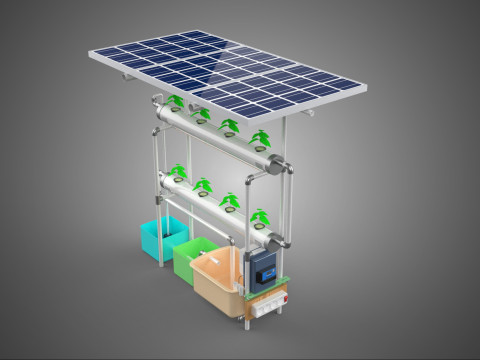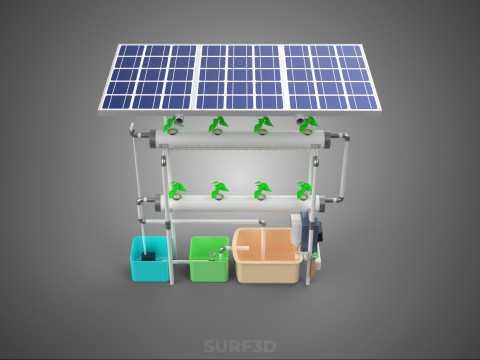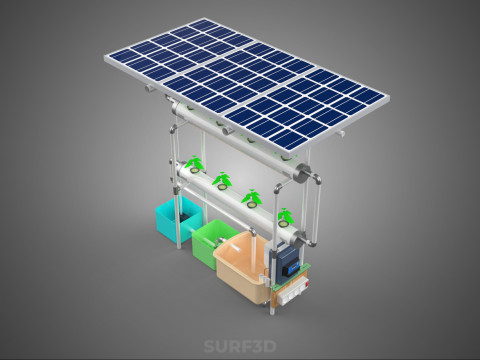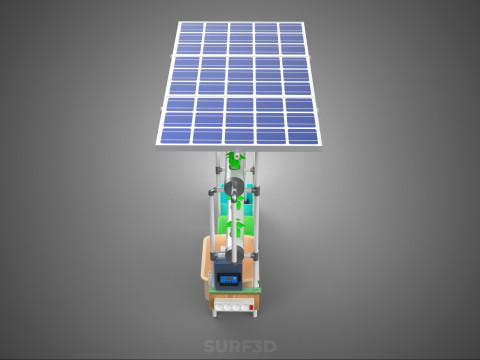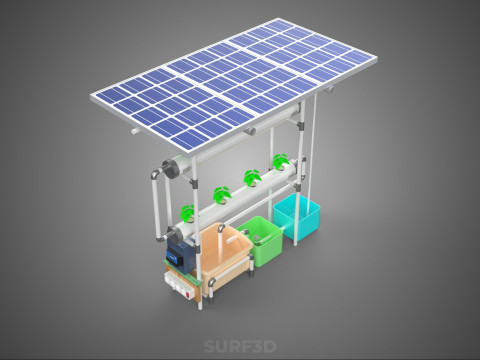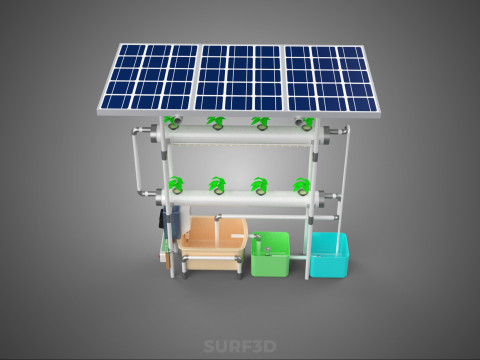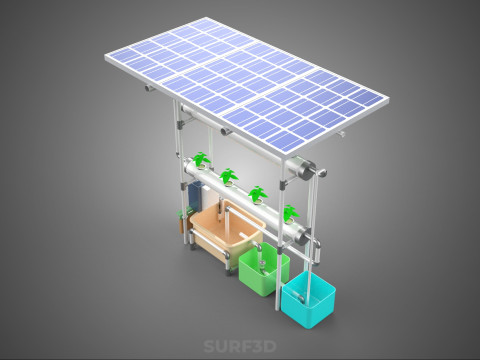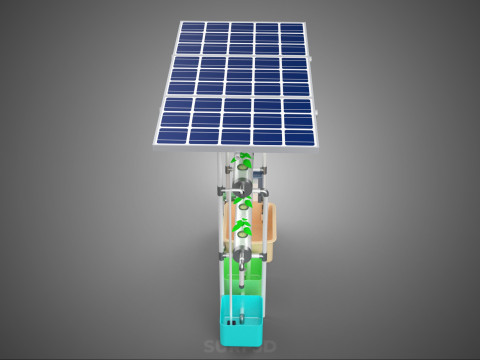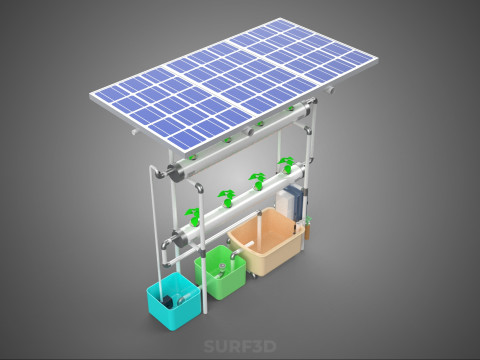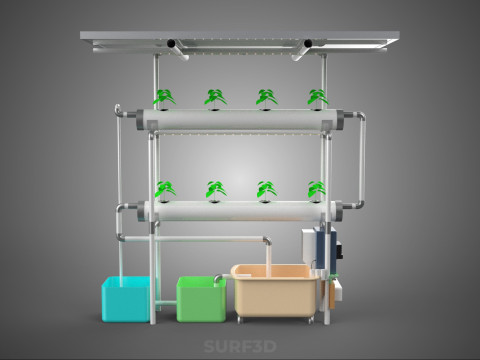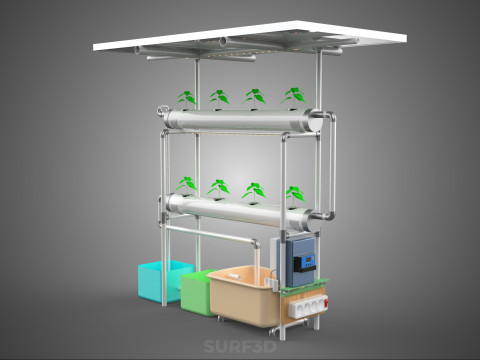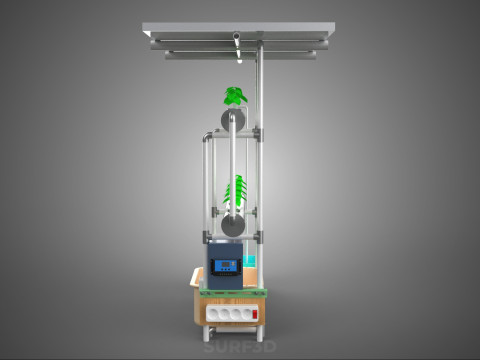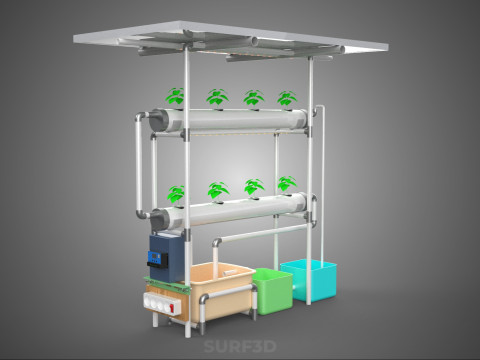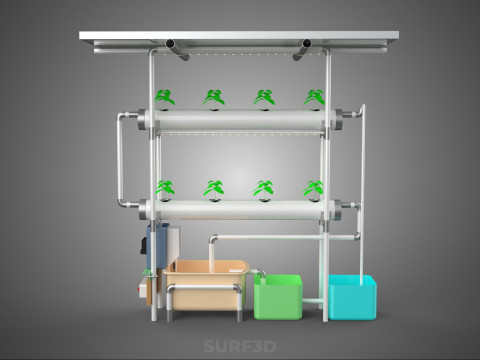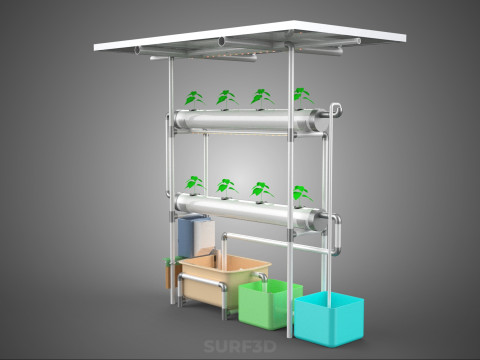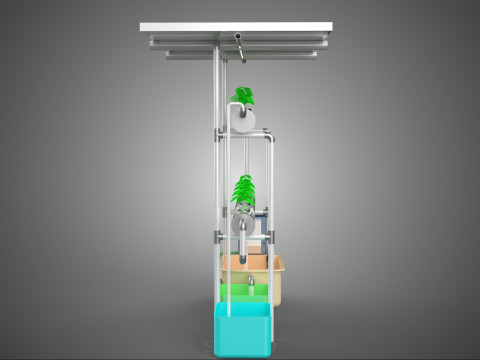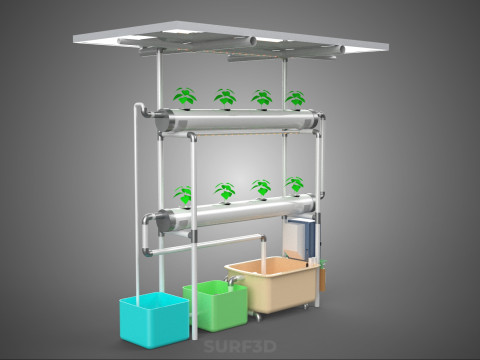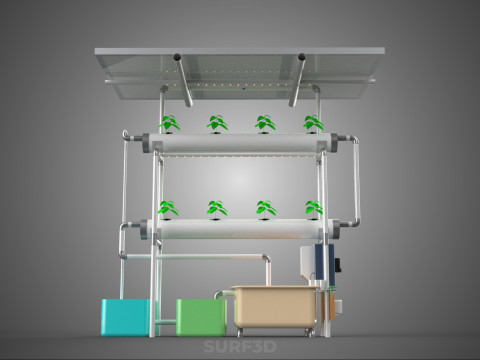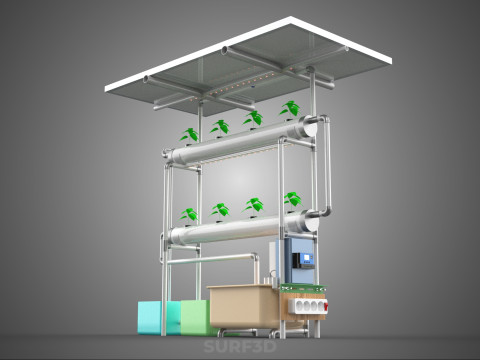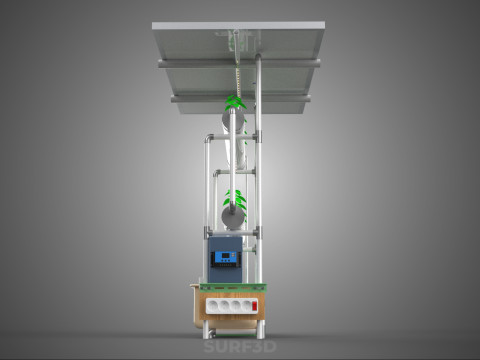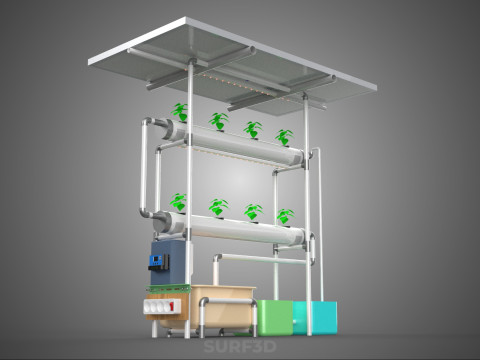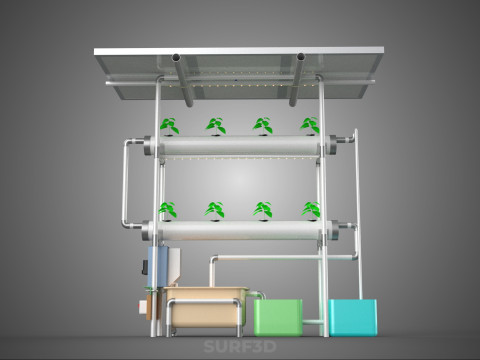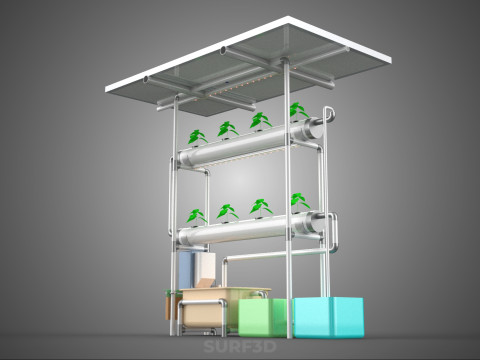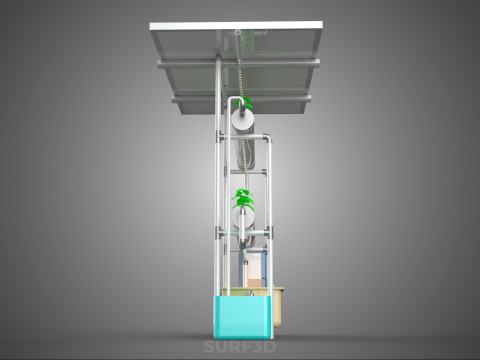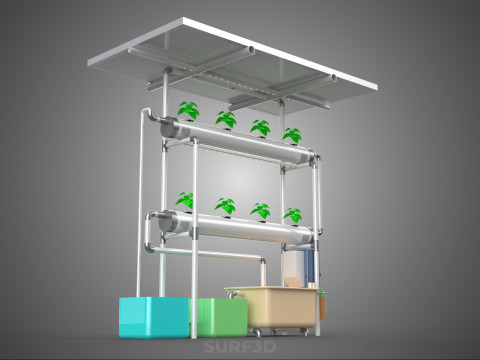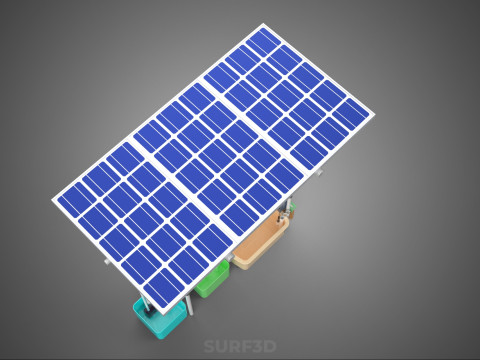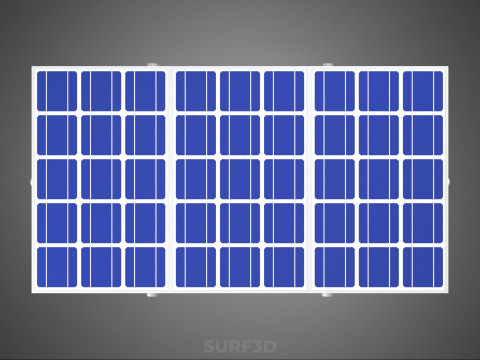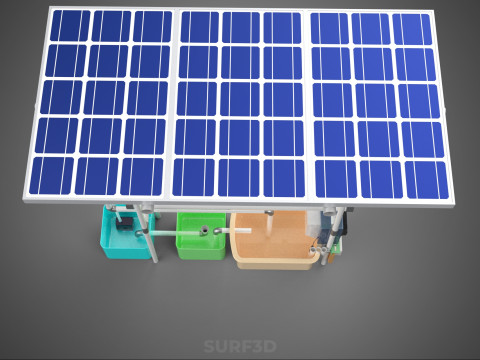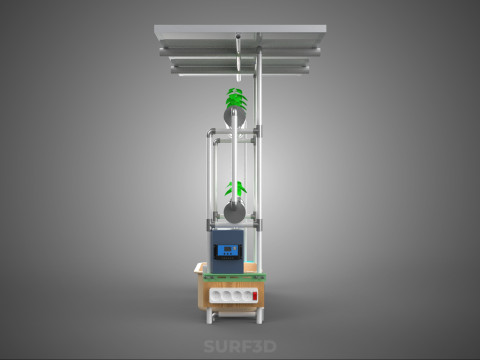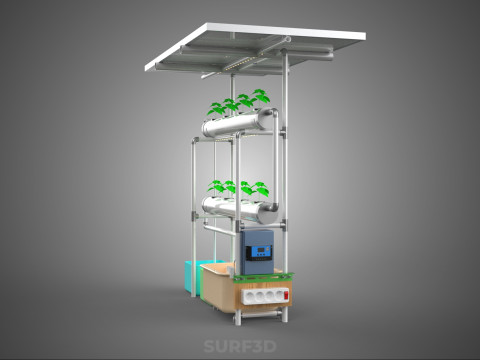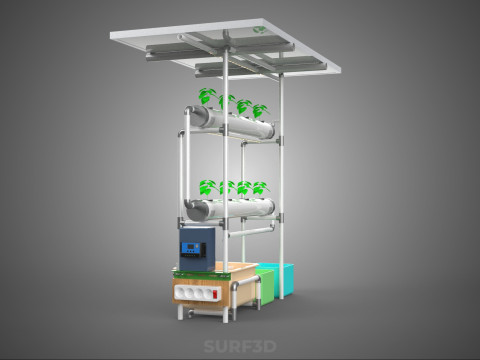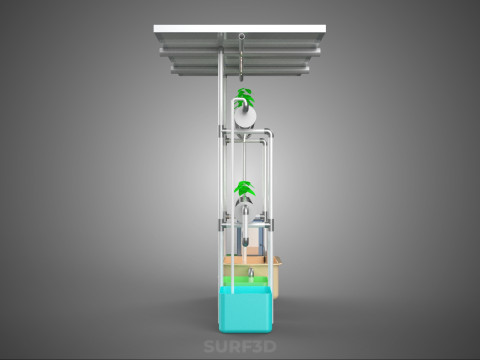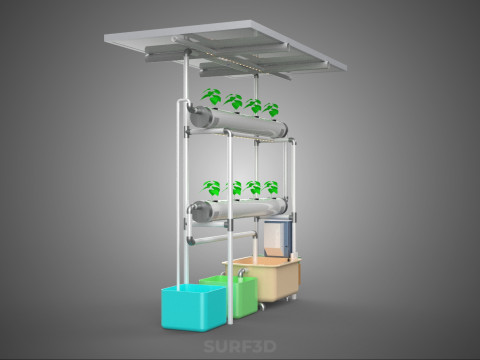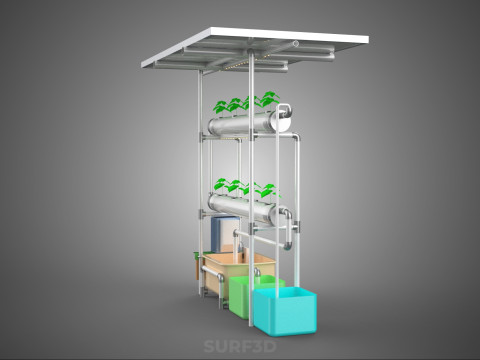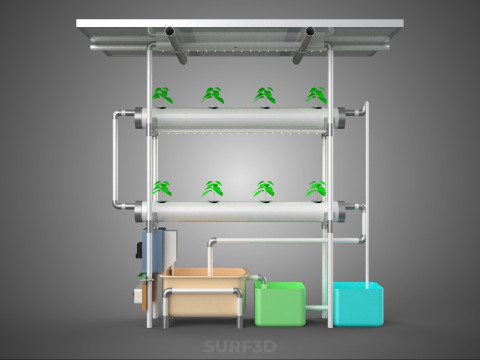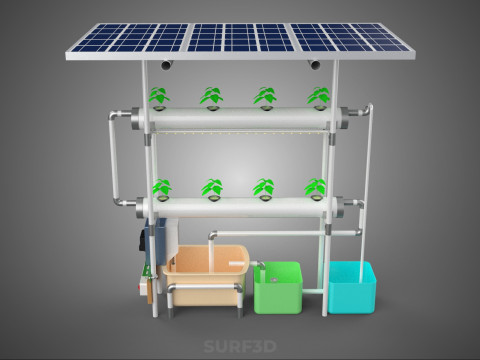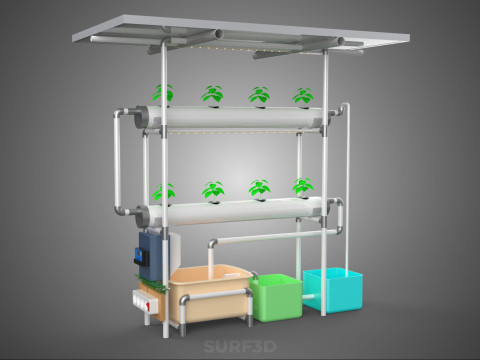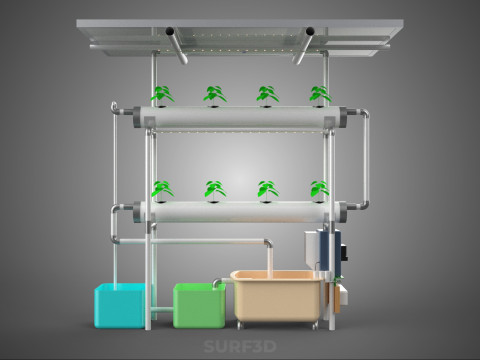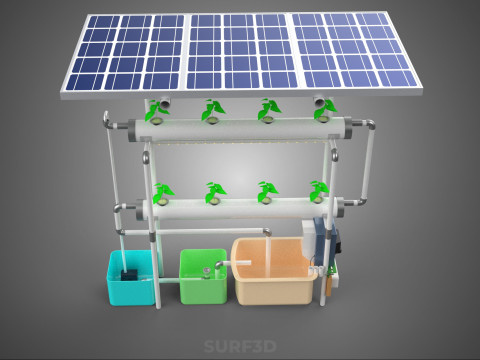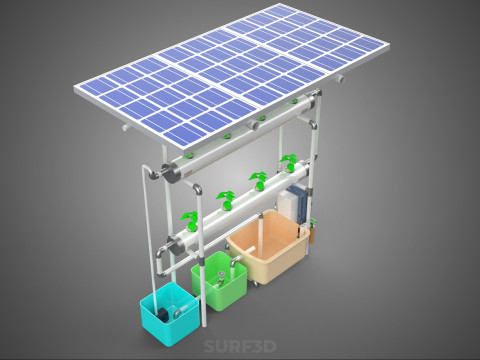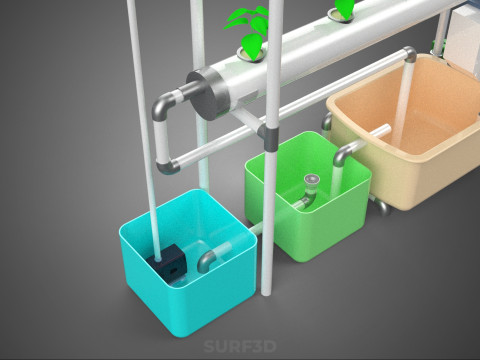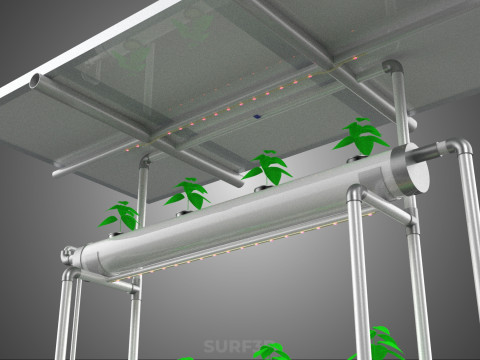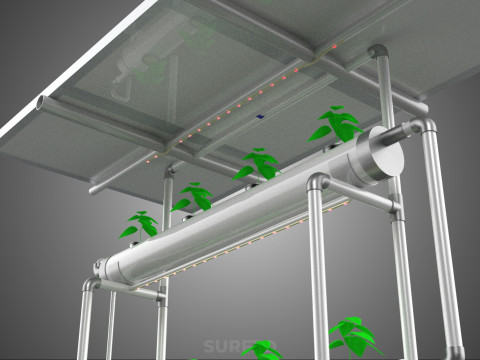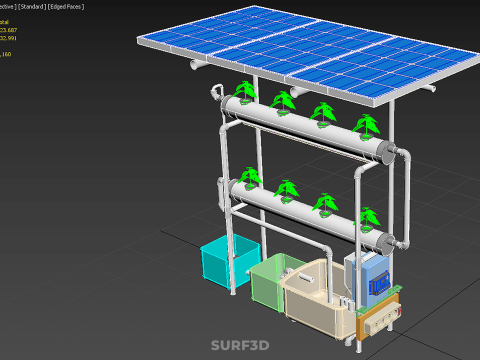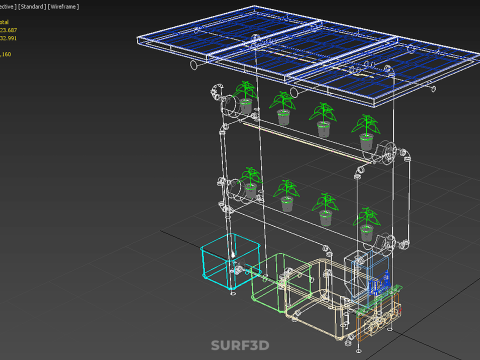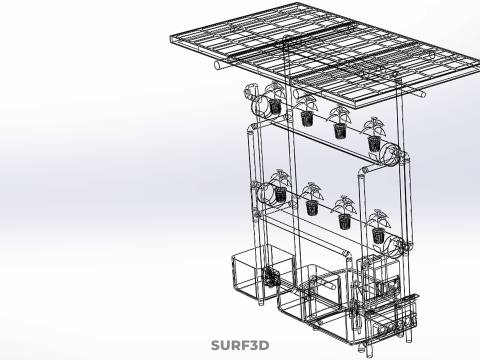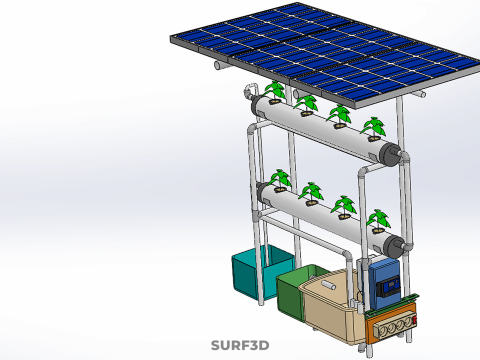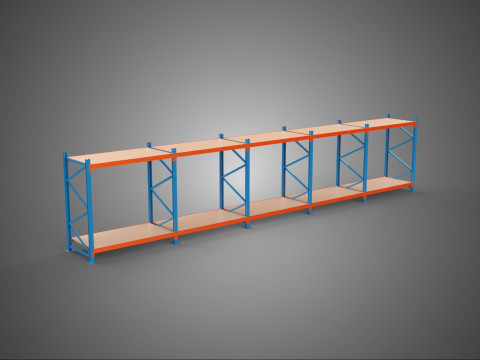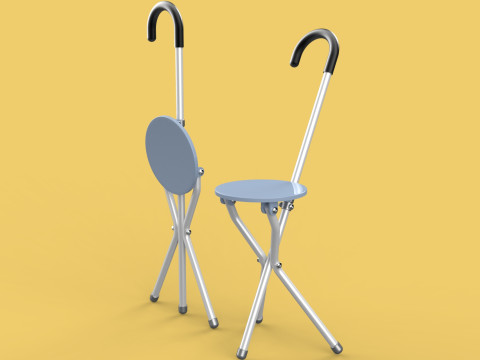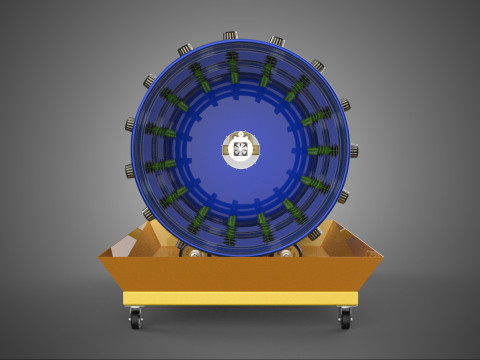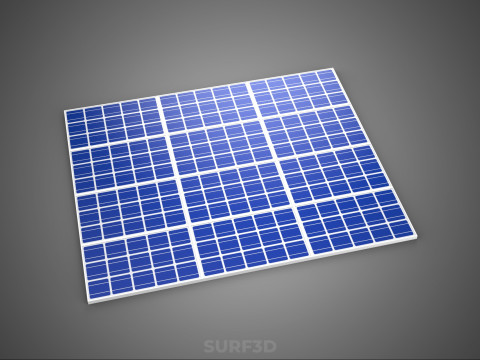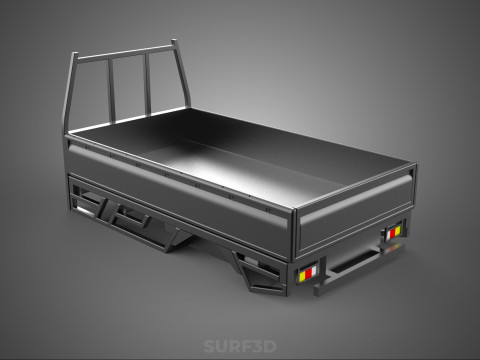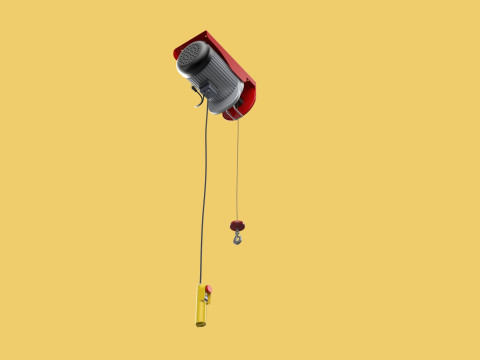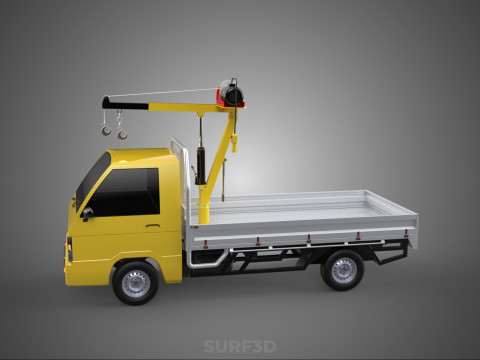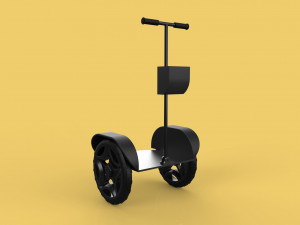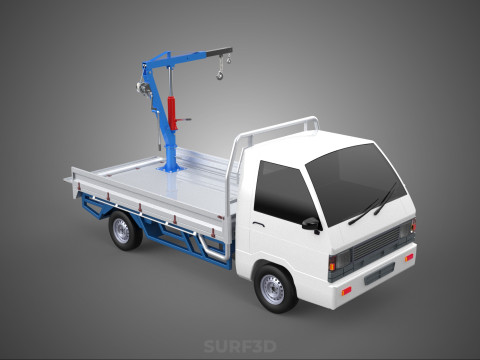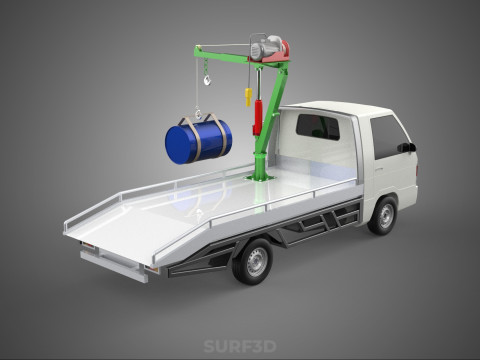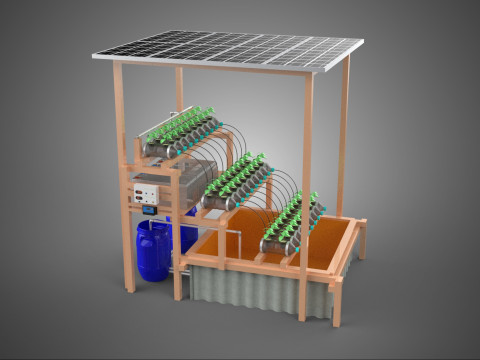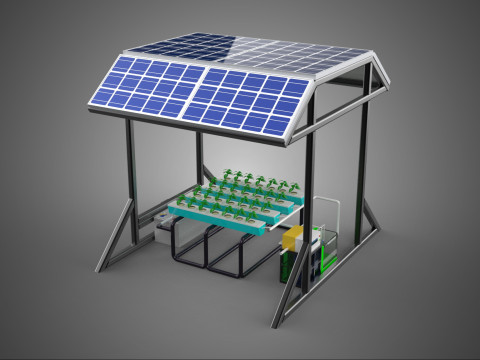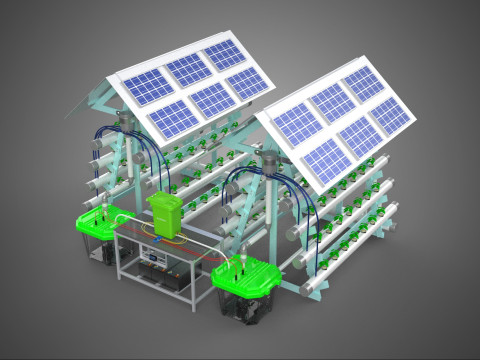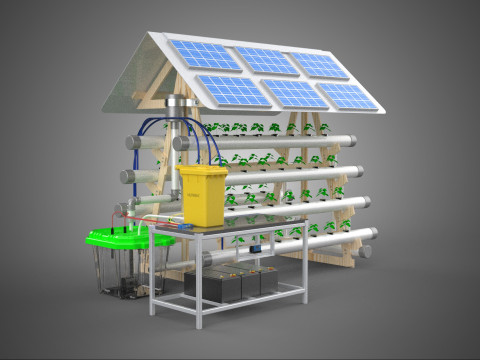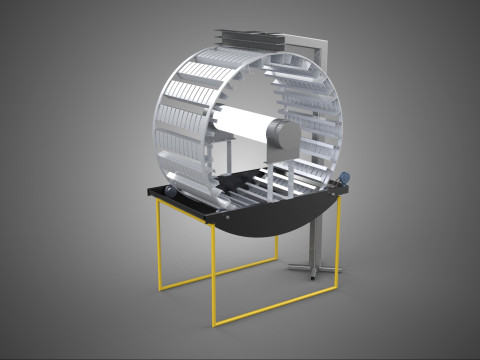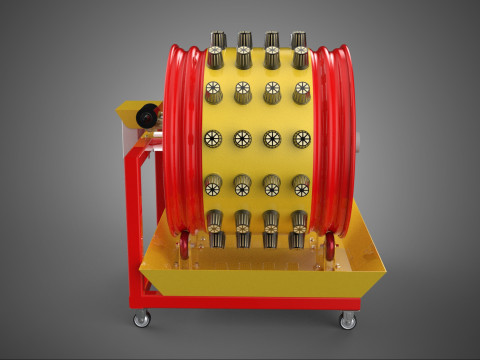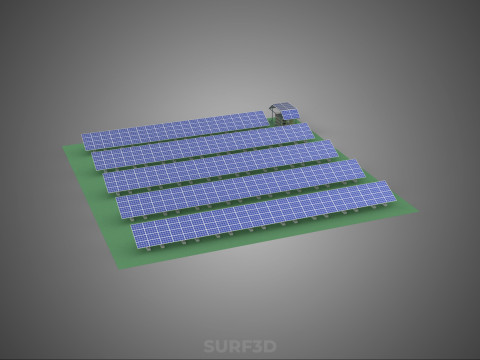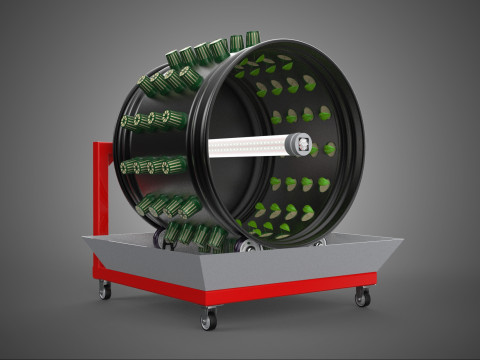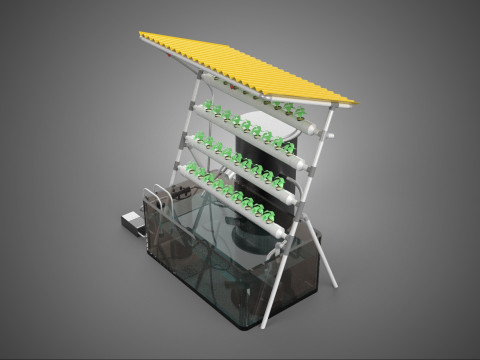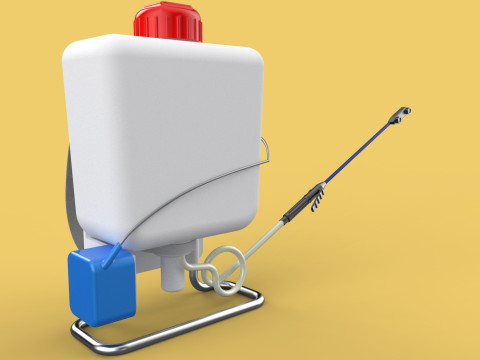IOT CONTROL SOLAR PANEL ENERGY HYDROPONIC PLANT LED GROW LIGHT 3D Modell
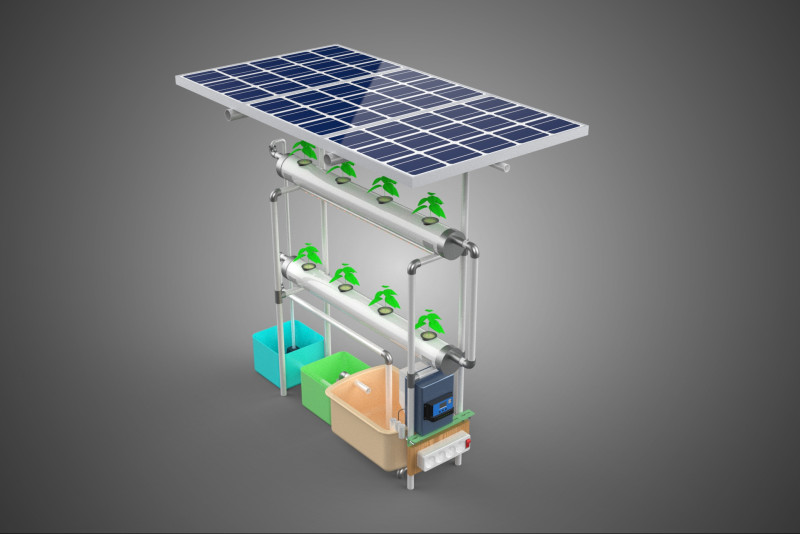
- Verfügbare Formate: Blender3D (.blend) 6.95 MBCollada (.dae) 5.91 MBSketchUp (.skp) 5.59 MBGLB (.glb / .gltf) 3.44 MBAutodesk AutoCAD (.dwg) 9.00 MBIGES (.iges) 7.15 MBSTEP (.step) 8.62 MBAutodesk 3DS MAX (.max) 16.07 MB3D Studio (.3ds) 2.56 MBStereolithography (.stl) 5.89 MBRhinoceros (.3dm) 21.01 MBAutodesk FBX (.fbx) 10.20 MBWavefront OBJ (.obj) 5.15 MBACIS(.sat) 10.38 MB
- Polygone:423687
- Eckpunkte:332991
- Animiert:No
- Texturen:No
- Rigged:No
- Materialien:
- Low-poly:No
- Sammlung:No
- UVW mapping:No
- Plugins Used:No
- Druckfertige:No
- 3D Scan:No
- Erwachsene:No
- PBR:No
- KI-Training:No
- Geometrie:Poly NURBS
- Unwrapped UVs:Unknown
- Betrachter:146
- Datum: 2025-09-10
- Artikel-ID:597933
High-quality 3D assets at affordable prices — trusted by designers, engineers, and creators worldwide. Made with care to be versatile, accessible, and ready for your pipeline.
Included File Formats
This model is provided in 14 widely supported formats, ensuring maximum compatibility:
• - FBX (.fbx) – Standard format for most 3D software and pipelines
• - OBJ + MTL (.obj, .mtl) – Wavefront format, widely used and compatible
• - STL (.stl) – Exported mesh geometry; may be suitable for 3D printing with adjustments
• - STEP (.step, .stp) – CAD format using NURBS surfaces
• - IGES (.iges, .igs) – Common format for CAD/CAM and engineering workflows (NURBS)
• - SAT (.sat) – ACIS solid model format (NURBS)
• - DAE (.dae) – Collada format for 3D applications and animations
• - glTF (.glb) – Modern, lightweight format for web, AR, and real-time engines
• - 3DS (.3ds) – Legacy format with broad software support
• - 3ds Max (.max) – Provided for 3ds Max users
• - Blender (.blend) – Provided for Blender users
• - SketchUp (.skp) – Compatible with all SketchUp versions
• - AutoCAD (.dwg) – Suitable for technical and architectural workflows
• - Rhino (.3dm) – Provided for Rhino users
Model Info
• - All files are checked and ****ed for integrity and correct content
• - Geometry uses real-world scale; model resolution varies depending on the product (high or low poly)
• • - Scene setup and mesh structure may vary depending on model complexity
• - Rendered using Luxion KeyShot
• - Affordable price with professional detailing
Buy with confidence. Quality and compatibility guaranteed.
If you have any questions about the file formats, feel free to send us a message — we're happy to assist you!
Sincerely,
SURF3D
Trusted source for professional and affordable 3D models.
More Information About 3D Model :
A system described as an "IoT Control Recirculating Water and Nutrient with Solar Panel Energy Hydroponic Plant with LED Grow Light" represents an advanced, self-sustaining, and digitally managed horticultural cultivation method. This integrated approach combines resource-efficient plant cultivation (hydroponics) with renewable energy (solar panels), optimized artificial illumination (LED grow lights), and intelligent automation and monitoring (Internet of Things, IoT) to create an environmentally controlled, sustainable, and often autonomous agricultural setup.
**Hydroponic System and Recirculation:**
At its core, this system employs hydroponics, a soilless cultivation technique where plants grow in nutrient-rich water solutions. The "recirculating water and nutrient" aspect signifies a closed-loop system, where the nutrient solution is continuously recycled. This method significantly reduces water consumption, often by 70-90% compared to traditional soil-based agriculture, as unused water and nutrients are collected and reused after replenishment and balancing. Common recirculating hydroponic techniques include Nutrient Film Technique (NFT), Deep Water Culture (DWC), and various drip irrigation systems, all designed to minimize waste and maximize nutrient uptake efficiency.
**Solar Panel Energy Integration:**
The power source for this system is primarily derived from solar panels. Photovoltaic (PV) modules convert sunlight directly into electricity, making the system environmentally sustainable and potentially suitable for off-grid applications. The energy generated powers all system components, including pumps, sensors, microcontrollers, and critically, the LED grow lights. An energy storage system, typically a battery bank, is essential to store surplus solar energy for continuous operation during periods of low light, night-time, or peak demand, ensuring uninterrupted functionality and system stability.
**LED Grow Lights for Optimized Growth:**
LED (Light Emitting Diode) grow lights are integral to providing optimal photosynthetic radiation, especially in indoor or supplemental lighting scenarios where natural sunlight is insufficient or unavailable. LEDs are highly energy-efficient, produce specific light spectra tailored to plant needs (e.g., blue for vegetative growth, red for flowering), and generate less heat compared to traditional grow lights. Their low power consumption and long lifespan make them ideal for integration with a solar-powered system, maximizing the efficiency of the renewable energy source while promoting robust plant growth.
**Internet of Things (IoT) Control:**
The "IoT Control" element transforms this hydroponic setup into a smart agriculture system. IoT integration involves a network of sensors, actuators, and a central microcontroller or gateway connected to the internet.
* **Sensors** continuously monitor critical environmental parameters, including:
* **pH levels:** To ensure optimal nutrient absorption by plants.
* **Electrical Conductivity (EC) or Total Dissolved Solids (TDS):** To measure nutrient concentration in the water.
* **Water temperature:** Affecting oxygen solubility and root health.
* **Air temperature and humidity:** Crucial for plant transpiration and overall health.
* **Water levels:** In nutrient reservoirs to trigger refilling.
* **Light intensity:** To adjust LED output or track solar availability.
* **Actuators** respond to sensor data and programmed logic, performing automated tasks such as:
* Activating pumps for nutrient solution circulation or replenishment.
* Adjusting pH and EC levels through precise dosing of acids/bases or nutrient concentrates.
* Controlling LED grow light schedules and intensity.
* Operating ventilation fans or cooling systems.
* **Microcontrollers** (e.g., Arduino, ESP32, Raspberry Pi) process sensor data, execute control algorithms, and facilitate communication.
* **Cloud Connectivity** enables remote monitoring and control via web or mobile applications. Growers can access real-time data, receive alerts, and adjust system parameters from anywhere, fostering precision agriculture. Data logging and analysis capabilities further allow for long-term optimization of growth recipes and resource management.
**System Advantages and Applications:**
This integrated system offers numerous advantages:
* **Sustainability:** Reduced water usage, elimination of pesticides, and reliance on renewable energy.
* **Resource Efficiency:** Precise control over nutrient delivery and light spectrum minimizes waste.
* **Yield Optimization:** Stable environmental conditions lead to faster growth cycles and higher yields.
* **Remote Management:** Allows for large-scale operations or cultivation in challenging environments with minimal human intervention.
* **Adaptability:** Suitable for urban farming, vertical farms, rooftop gardens, and regions with scarce water or fertile land.
* **Climate Resilience:** Cultivation can occur independently of external weather conditions.
**Conclusion:**
The "IoT Control Recirculating Water and Nutrient with Solar Panel Energy Hydroponic Plant with LED Grow Light" represents a sophisticated paradigm in sustainable and smart agriculture. By converging efficient hydroponic techniques with renewable energy and intelligent automation, these systems offer a scalable and environmentally responsible solution for food production, addressing challenges of resource scarcity, climate change, and gro***g global food demand.
KEYWORDS: IoT, Hydroponics, Recirculating system, Solar energy, LED grow lights, Smart agriculture, Sustainable farming, Precision agriculture, Urban farming, Controlled environment agriculture, Automation, Sensors, Actuators, Microcontroller, Remote monitoring, Data logging, pH sensor, EC sensor, Water conservation, Nutrient management, Renewable energy, Energy storage, Off-grid systems, Plant growth, Horticultural lighting, Resource efficiency, Yield optimization, Climate resilience, Digital farming, Environmental control
Falls Sie ein anderes Format benötigen, eröffnen Sie bitte ein neues Support-Ticket und fragen Sie danach. Wir können 3D Modelle in folgende Formate konvertieren: .stl, .c4d, .obj, .fbx, .ma/.mb, .3ds, .3dm, .dxf/.dwg, .max. .blend, .skp, .glb. Wir konvertieren keine 3D Szenen und Formate wie .step, .iges, .stp, .sldprt usw!


 English
English Español
Español Deutsch
Deutsch 日本語
日本語 Polska
Polska Français
Français 中國
中國 한국의
한국의 Українська
Українська Italiano
Italiano Nederlands
Nederlands Türkçe
Türkçe Português
Português Bahasa Indonesia
Bahasa Indonesia Русский
Русский हिंदी
हिंदी